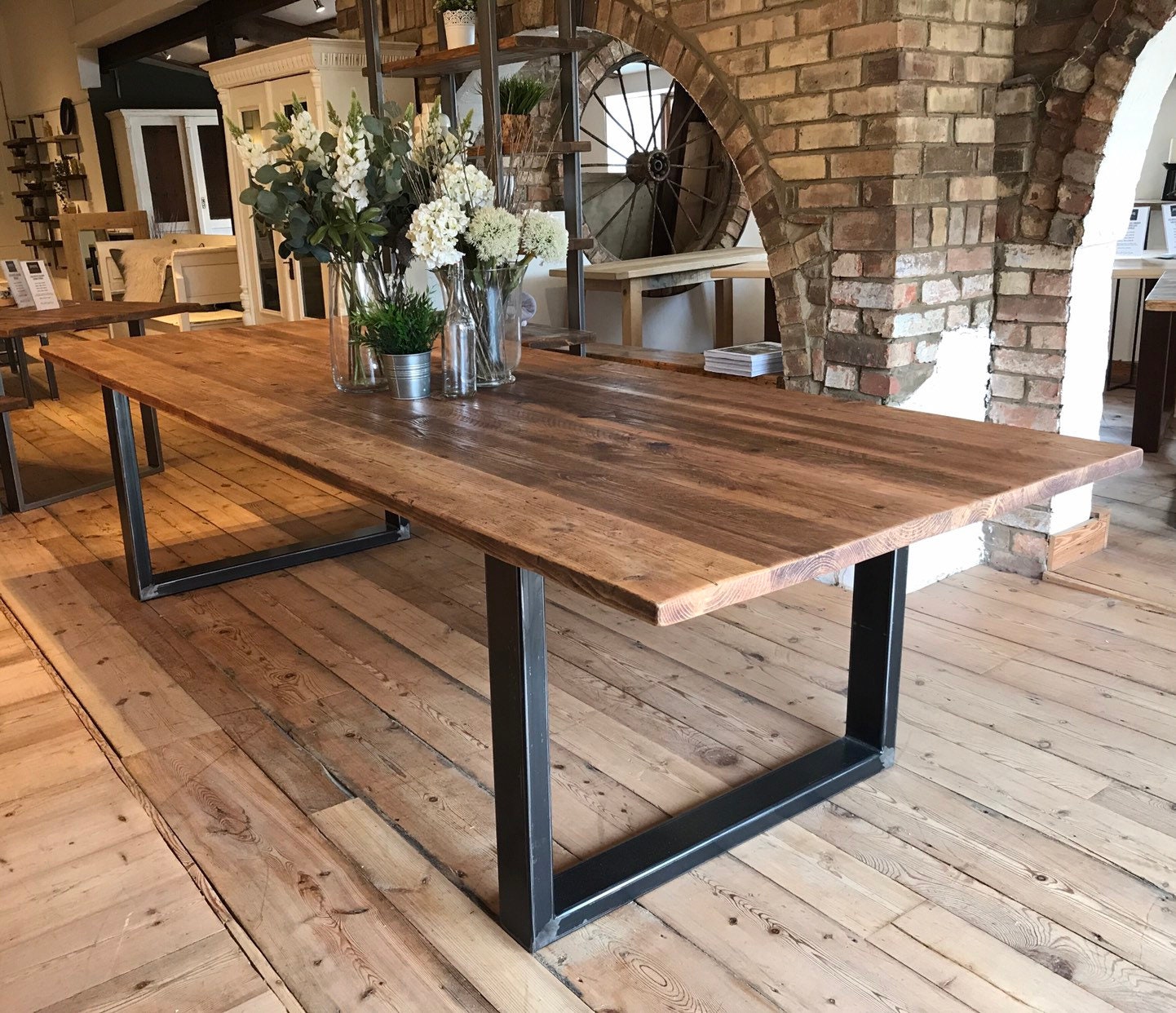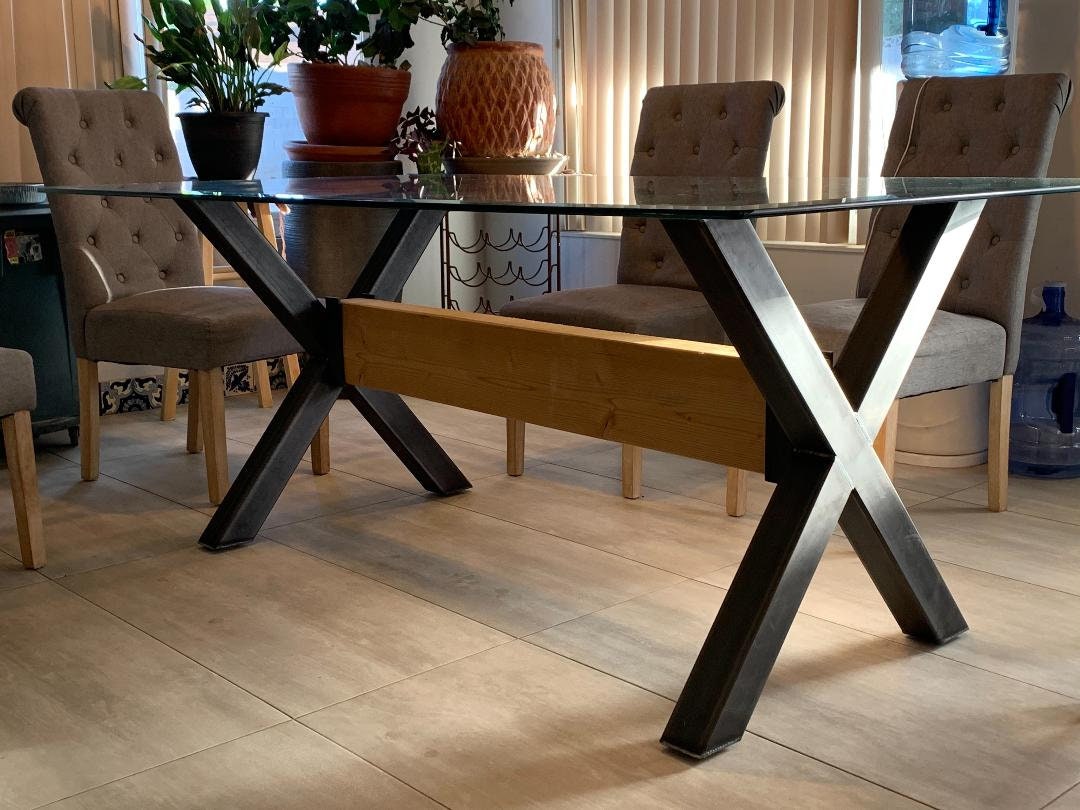Important Factors To Consider for Choosing the Right Table Legs Wood
Picking the suitable timber for dining table legs involves a nuanced understanding of numerous variables that influence both functionality and visual charm. The choice of wood type, varying from durable woods to much more fragile softwoods, plays a pivotal duty in making sure resilience and security. Furthermore, factors to consider relating to budget plan, upkeep, and design must be diligently examined. Each of these aspects can dramatically affect the general experience of your eating room. Understanding how these aspects relate is necessary for making an informed choice that fulfills your particular demands and choices - Dining Table Legs Wood. What factors to consider will you prioritize in your option process?
Value of Timber Kind

Hardwoods, such as maple, oak, and walnut, are often favored for their strength and resistance to put on. These kinds of timber offer a durable foundation that can hold up against everyday use, making them ideal for eating tables that experience frequent events. In comparison, softer woods like yearn might be extra at risk to scratches and dents, which may not be excellent for high-traffic areas.
Furthermore, the selection of wood can likewise affect the simplicity of maintenance. Some timbers require normal oiling or securing to protect their look, while others might be much more flexible. Eventually, selecting the ideal wood type involves stabilizing visual factors to consider with functional needs, ensuring that the table legs not just look attractive yet also stand the examination of time.
Assessing Stability and Toughness
When examining table legs, one have to take into consideration the stability and toughness they provide to the total structure. The legs are essential in sustaining the table top and making certain the eating experience is pleasurable and secure. A steady table is vital for avoiding tottering or tipping, which can lead to spills or crashes during meals.
The selection of wood kind dramatically influences strength. Woods such as walnut, maple, and oak are generally extra durable and durable than softwoods like ache or fir. Additionally, the density and design of the legs play an essential duty; thicker legs or those with a tapered style can offer better support and stability.
Visual Considerations
While performance is critical, the aesthetic charm of table legs can not be neglected, as they substantially influence the overall layout and setting of the dining space. The choice of wood, surface, and design can boost or take away from the table's visual impact.

Finishes likewise play a crucial duty in visual appeals. An all-natural surface can highlight the wood's innate beauty, while repainted or tarnished legs can present shade and individuality right into the space. The percentage and range of the legs family member to the tabletop and bordering furnishings needs to be considered to guarantee aesthetic balance and cohesion.
Eventually, the eating table legs must not just serve a functional function yet likewise add to a natural and inviting atmosphere, making them a crucial consideration in the general style of the eating location.
Upkeep Requirements
To guarantee long life and protect the charm of wooden table legs, routine maintenance is necessary (Dining Table Legs Wood). Timber is an all-natural material that can be susceptible to harm from moisture, pop over here warm, and wear. Establishing a routine care strategy will dramatically enhance the durability of your dining table legs.
Begin with routine dusting using a soft, lint-free towel to get rid of dust and debris that can scrape the surface. For more comprehensive cleaning, make use of a moderate soap service and damp fabric, staying clear of excess dampness that might seep right into the wood. It is advisable to use a high-quality wood polish or conditioner every couple of months to nourish the timber and maintain its appeal.
Resolve any type of scratches or damages quickly with proper timber filler or touch-up pens to stop further damage. By adhering to these upkeep demands, you will not only maintain the visual appeal of your wood eating table legs yet also extend their functional lifespan.
Budget Plan and Price Elements
Budget plan and cost aspects often play an important role in the decision-making procedure for choosing wooden table legs. When evaluating options, it is vital to develop a clear budget plan that straightens with your overall furniture financial investment. The cost of wood eating table legs can vary significantly based on the kind of workmanship, layout, and timber intricacy.
Woods such as oak, cherry, and walnut generally command higher rates as a result of their toughness and aesthetic appeal. On the other hand, softer timbers like ache may be more budget-friendly yet could not offer the exact same durability. Additionally, personalized or artisan-crafted legs can sustain extra expenses, mirroring the skill and time purchased their creation.
It is additionally essential to take into consideration the potential lasting worth of your investment. While choosing lower-cost materials may seem monetarily sensible originally, they may require more constant substitute or repair services, inevitably enhancing general expenditure.
Consequently, balancing top quality and cost is crucial. Focus on materials that satisfy your visual choices while ensuring they fit easily within your budget, allowing you to produce a dining area that is both aesthetically appealing and useful.
Verdict
To conclude, selecting the proper wood for eating table legs requires mindful consideration of different elements, consisting of timber kind, stability, aesthetics, maintenance, and budget plan. Woods such as oak and walnut give exceptional longevity and strength, while design and thickness add to overall stability. Visual allure and maintenance demands should straighten with specific choices and way of living. Inevitably, an educated choice will enhance the durability and aesthetic charm of the table, making sure satisfaction and performance for years to find.
Choosing the appropriate kind of timber for dining table legs is critical for both visual allure and structural honesty. Inevitably, choosing the appropriate wood type involves stabilizing aesthetic considerations with practical needs, making sure that the eating table legs not only look enticing however additionally stand the test of time.
It find here is advisable to use a high-quality More Bonuses timber polish or conditioner every few months to nurture the timber and preserve its luster.
The expense of wooden dining table legs can differ dramatically based on the type of workmanship, style, and timber complexity.
In final thought, picking the proper wood for dining table legs requires cautious factor to consider of numerous factors, including wood type, stability, aesthetic appeals, maintenance, and spending plan.